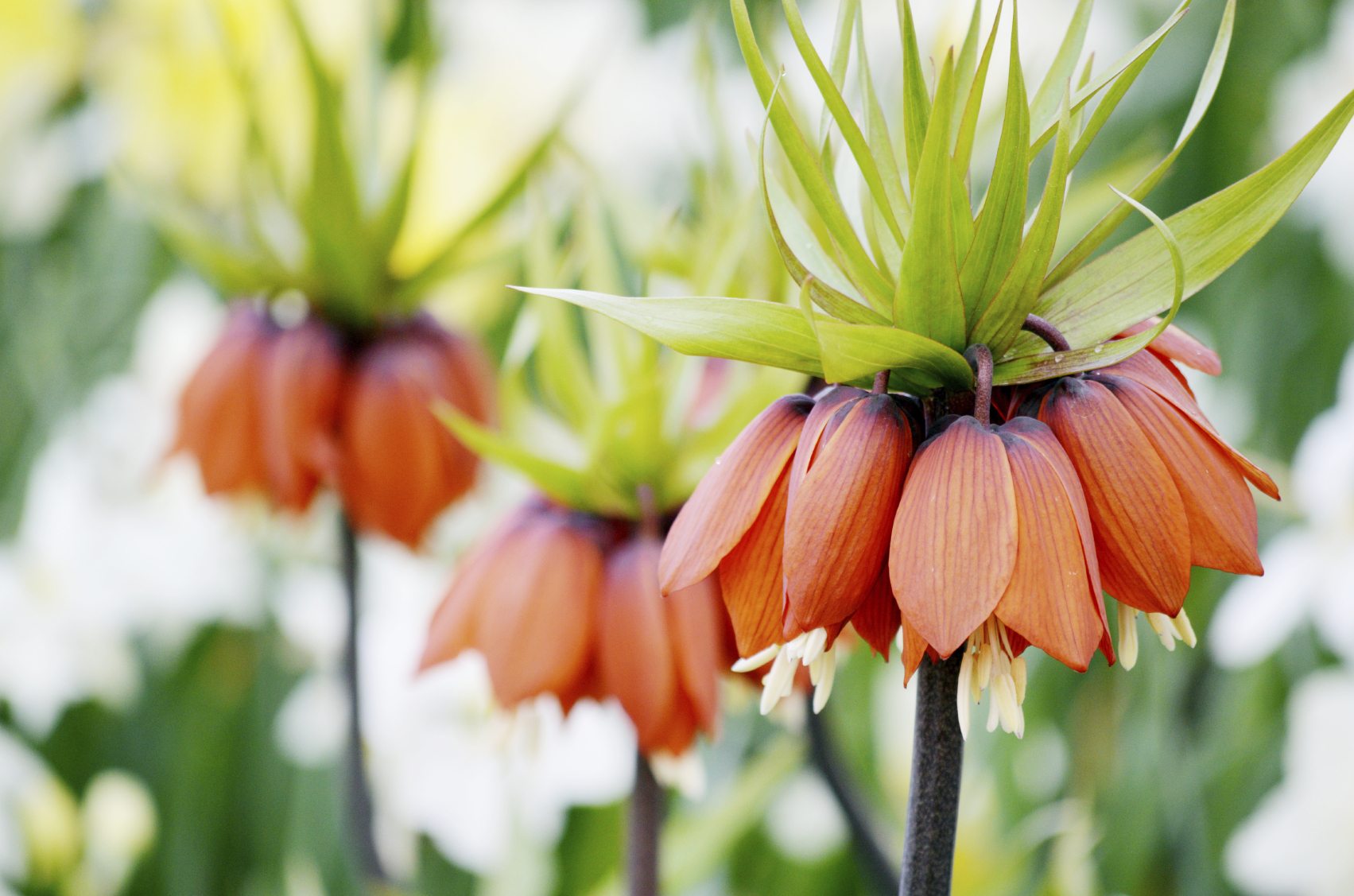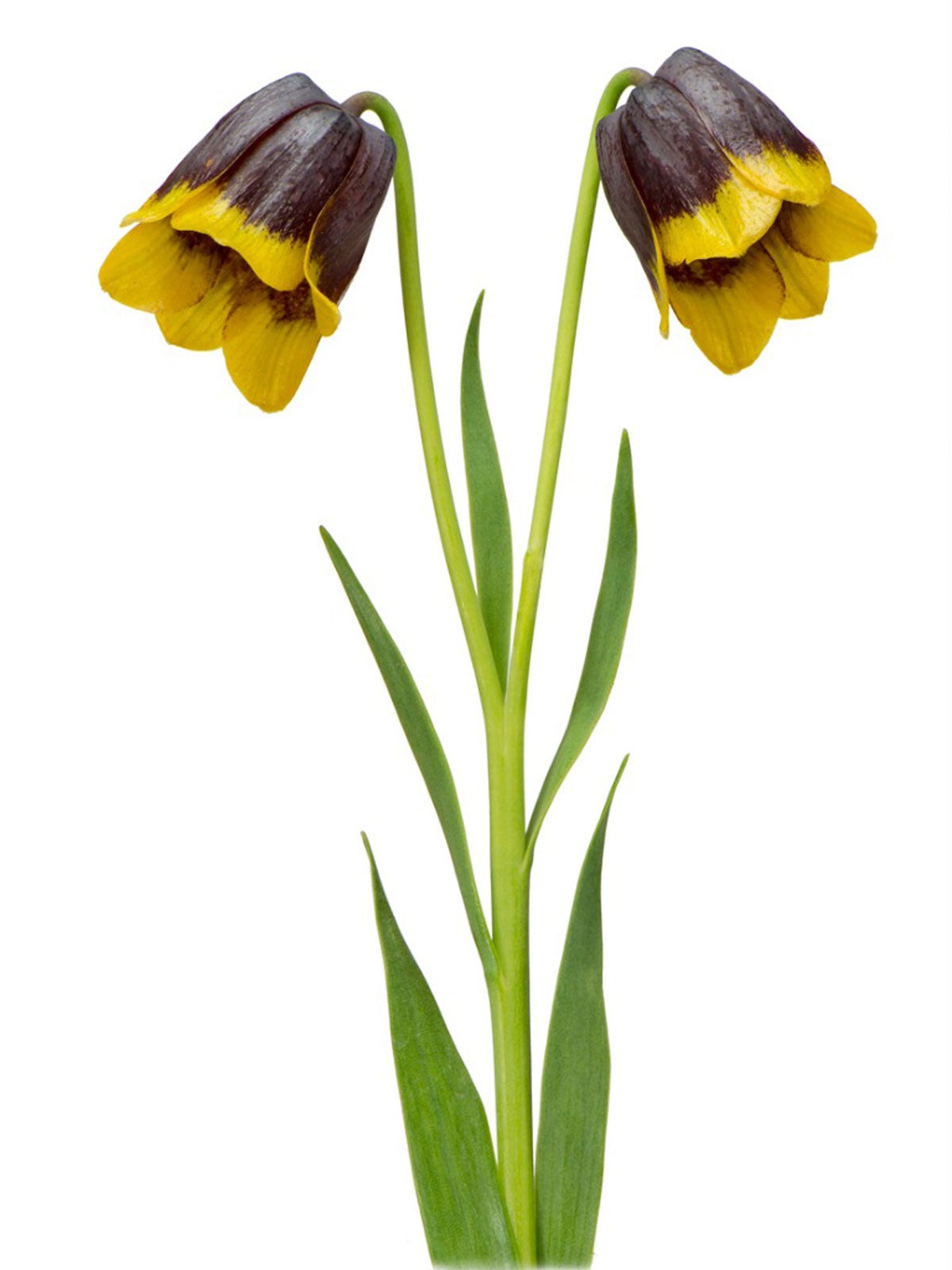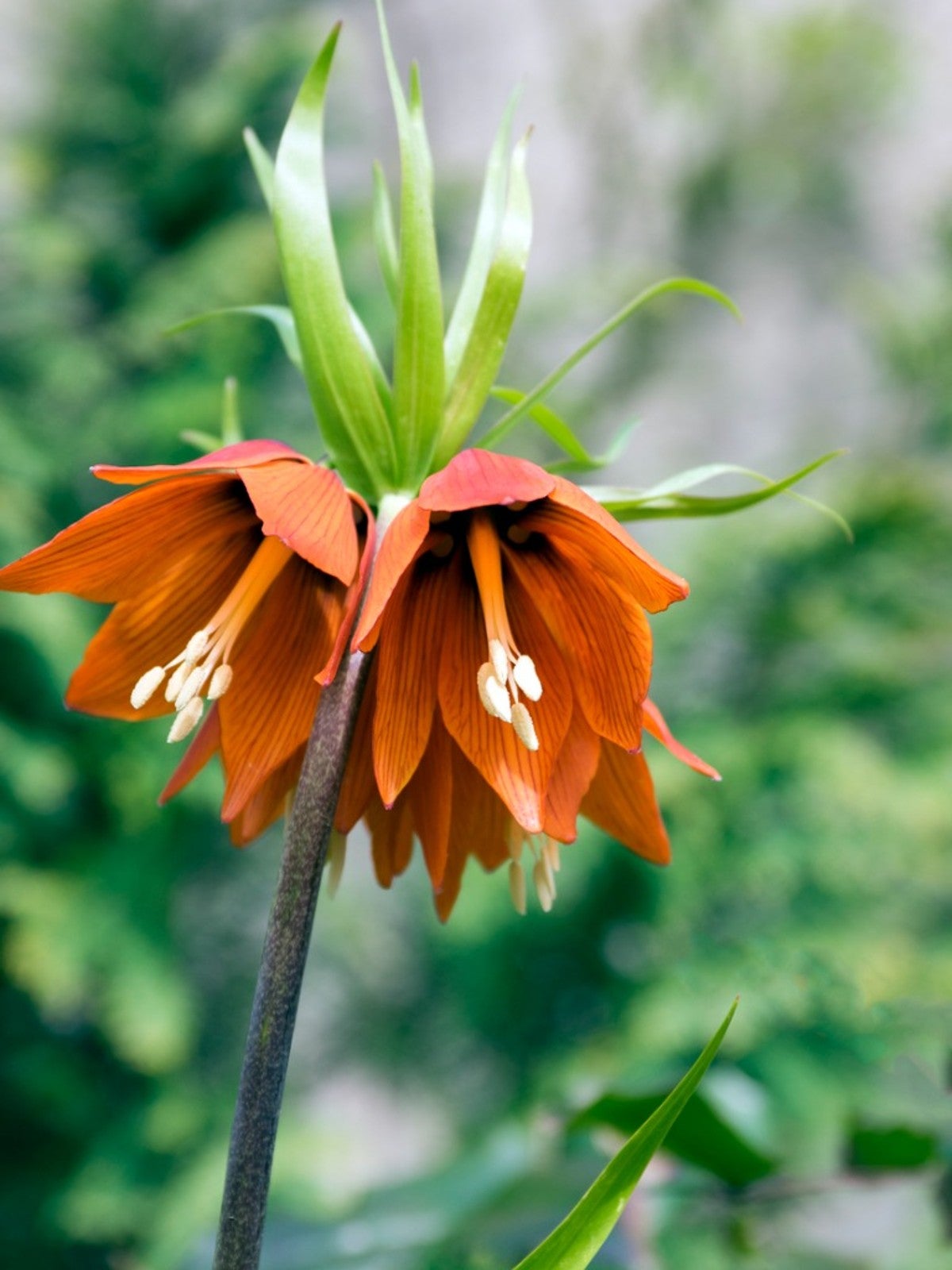Crown Imperial Fritillaria: How To Grow Crown Imperial Plants


Crown imperial plants (Fritillaria imperialis) are lesser-known perennials that make for a striking border for any garden. Keep reading to learn more about growing crown imperial flowers.
Crown Imperial Flowers
Crown imperial plants are native to Asia and the Middle East and are hardy in USDA zones 5 to 9. They are distinguished by 1- to 3-foot (30.5-91.5 cm.) tall erect stalks topped with pointed leaves and a circular collection of hanging, bell-shaped flowers. These flowers come in shades of red, orange, and yellow depending upon variety.
- The flowers of the Lutea variety are yellow.
- The flowers of the Aurora, Prolifer, and Aureomarginata are all an orange/red color.
- Rubra Maxima has bright red blossoms.
While beautiful and interesting, crown imperial flowers have an added dimension that’s good or bad, depending upon who you are: they have a strong, musky scent about them, a bit like a skunk. This is good for keeping rodents out of your garden bed, which everyone likes. It’s also a smell that gardeners tend to love or hate. If you’re sensitive to strong scents, it might be a good idea to smell a mature crown imperial before planting your own and possibly setting yourself up for a bad time.
How to Grow Crown Imperial Plants
As with other fritillaria bulbs, crown imperial fritillaria should be planted in autumn for mid-spring blooms. At 4 inches (10 cm.) wide, crown imperial bulbs are unusually large. They are also prone to rot, so make sure to plant them in very well-drained soil. Grainy sand or perlite are good materials to plant into. Start the bulbs on their sides to further reduce the risk of rot. Bury them 5 inches (12 cm.) deep in the autumn in an area that will receive full sun in the spring. At full maturity, the plants will spread 8 to 12 inches (20.5-30.5 cm.) wide. The plants can be vulnerable to rust and leaf spot but are very good at repelling pests. Once established, Fritillaria imperialis care is minimal.
Gardening tips, videos, info and more delivered right to your inbox!
Sign up for the Gardening Know How newsletter today and receive a free copy of our e-book "How to Grow Delicious Tomatoes".

The only child of a horticulturist and an English teacher, Liz Baessler was destined to become a gardening editor. She has been with Gardening Know how since 2015, and a Senior Editor since 2020. She holds a BA in English from Brandeis University and an MA in English from the University of Geneva, Switzerland. After years of gardening in containers and community garden plots, she finally has a backyard of her own, which she is systematically filling with vegetables and flowers.
-
 Looking For Plants To Give You The Soft And Fuzzies? Try These 5 Fuzzy Leaf Plant Options
Looking For Plants To Give You The Soft And Fuzzies? Try These 5 Fuzzy Leaf Plant OptionsLovers of texture, drama, silver foliage and tactile plants will adore these special sensory garden additions. These fuzzy leaf plant options will leave you all aglow
By Susan Albert
-
 Get Ready For A Summer Of Hummers! Grow These Full Sun Hummingbird Plants and Flowers
Get Ready For A Summer Of Hummers! Grow These Full Sun Hummingbird Plants and FlowersIf you’re lucky enough to enjoy a sunny backyard, make sure you are maxing out on your pollinator opportunities and grow these full sun hummingbird plants and flowers
By Tonya Barnett
-
 Growing Fritillary Flowers: Planting Fritillaria Michailovskyi Bulbs
Growing Fritillary Flowers: Planting Fritillaria Michailovskyi BulbsGrowing fritillary flowers is a fun way to add a unique bulb to beds. Learn about Michael’s flower fritillary and its unique flowers here.
By Mary Ellen Ellis
-
 Growing Fritillaria Bulbs - How To Grow And Care For Wildflower Fritillaria Lilies
Growing Fritillaria Bulbs - How To Grow And Care For Wildflower Fritillaria LiliesDelicate and exotic, Fritillaria flower varieties may appear difficult to grow, but most Fritillaria care is simple after the large bulbs bloom. Learn more about these lesser known flower bulbs here.
By Becca Badgett